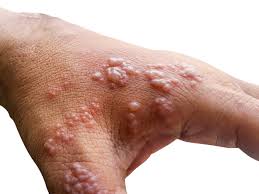At the time ‘Monkey Pox’, the infectious disease that was seen only in the Central and West African region until recently, began to spread by invading different countries of the world.
With the spread of this disease to about 75 countries very quickly, and with the number of confirmed cases of more than 16,000 cases with five confirmed deaths, the World Health Organization declared this as a ‘Public Health Emergency of International Concern’.
Although no cases have been reported from our country yet, we believe that it will be important to update your knowledge once again when ‘monkeypox’ has entered several countries around Sri Lanka.
The virus can enter the body of a healthy person through close contact with an infected person. It is said that blisters and wounds caused by the disease, other bodily fluids, infected respiratory droplets, and things like bed sheets recently used by the infected person may also contain the virus.
But this is not a sexually transmitted disease. Symptoms include fever, swelling of the lymph nodes, pain in the flesh, severe fatigue of the body, and blisters.
Symptoms may take 5-21 days after exposure to an infected person. Blisters usually appear 1-3 days after the onset of fever and are mainly seen on the face, hands and soles. There are also cases of painful blisters/sores in the mucous membranes of the mouth, genitals and eyes.
When these rashes, which first appear as spots, turn into blisters, lumps and blisters or pus blisters, a crust is formed on the surface of the skin and after they completely fall off, it can be concluded that the infection has been cured.
These symptoms can also be seen in common viral infections such as chicken pox / hand-foot-mouth disease, so it is very important to seek medical advice immediately and to stay away from others as soon as symptoms appear.
Although monkeypox is a self-healing disease that usually heals in 2-4 weeks, there is a risk of complications in immunocompromised people and young children.
Currently, the death rate of this epidemic has been calculated as 3-6%. It also shows that the rate of transmission of this disease is very low compared to the rate of transmission of viral diseases such as smallpox/measles. In the face of the current crisis, we have to overcome this epidemic challenge somehow.
We hope that you, the citizen, will work to provide maximum support by following the public health guidelines that we provide.
– Health Promotion Bureau-

